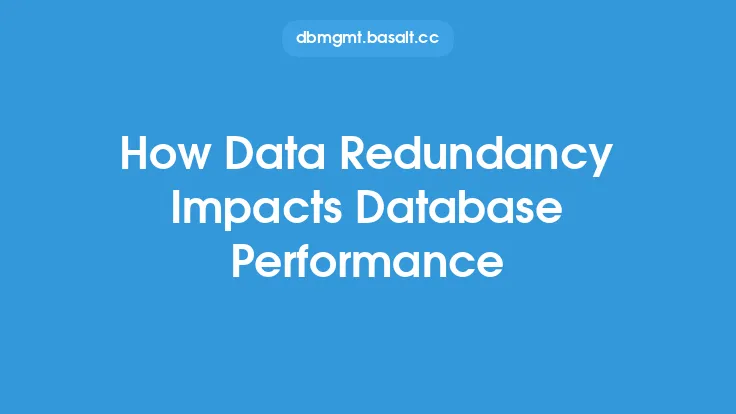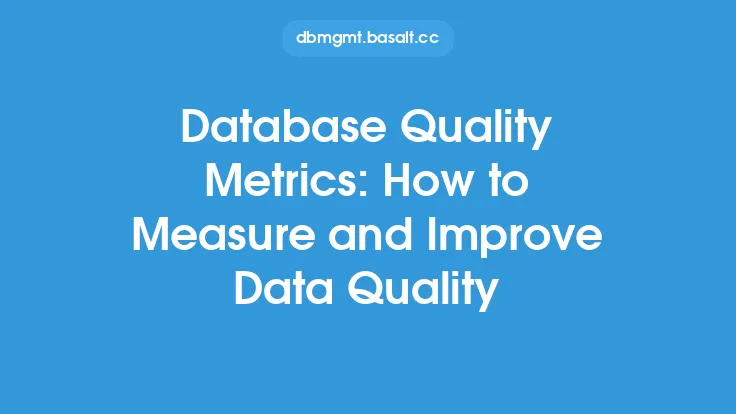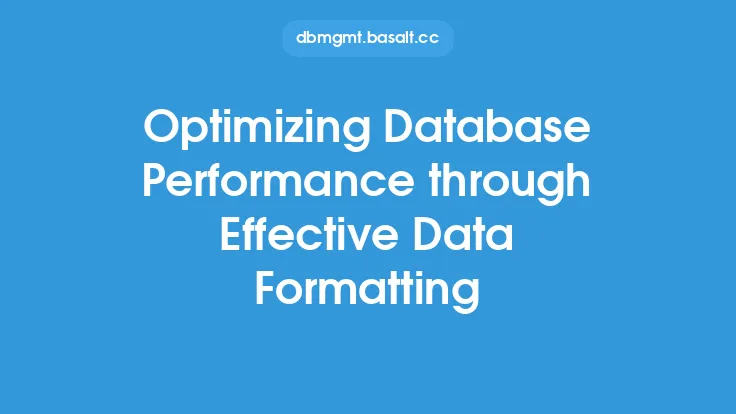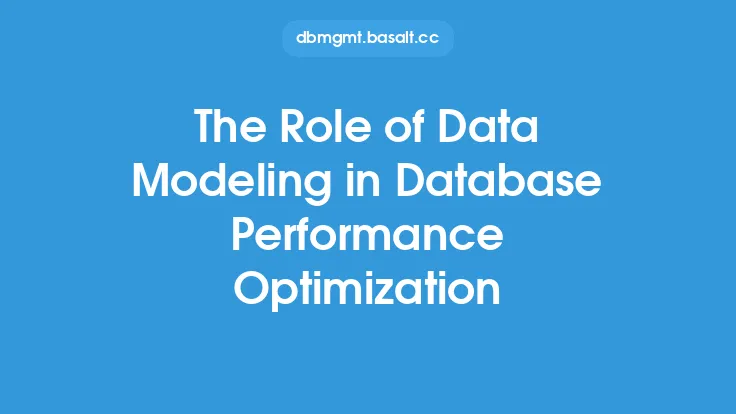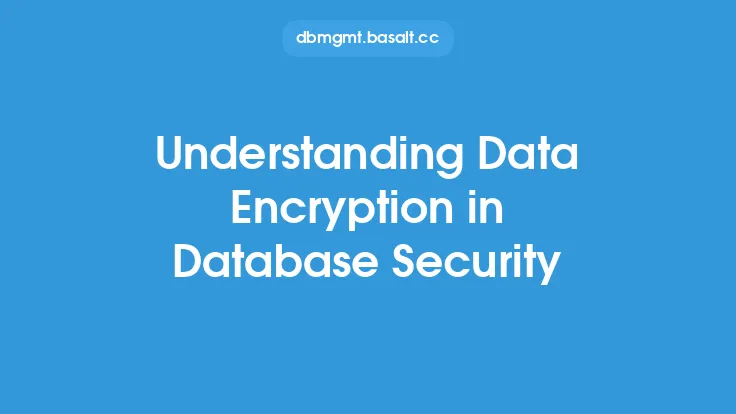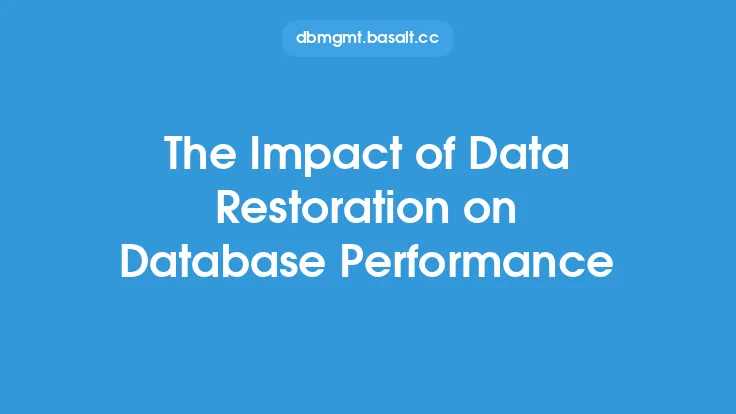Data encryption is a crucial aspect of database security, as it protects sensitive information from unauthorized access. However, encryption can also impact database performance, and it's essential to understand the trade-offs involved. In this article, we'll delve into the details of how data encryption affects database performance, exploring the various factors that influence this relationship.
Introduction to Encryption and Performance
Data encryption involves converting plaintext data into unreadable ciphertext to prevent unauthorized access. This process requires computational resources, which can lead to a decrease in database performance. The impact of encryption on performance depends on several factors, including the type of encryption algorithm used, the amount of data being encrypted, and the hardware and software configuration of the database system. Understanding these factors is crucial to minimizing the performance impact of encryption while maintaining the security of sensitive data.
Encryption Algorithms and Performance
Different encryption algorithms have varying performance characteristics. Symmetric-key algorithms, such as AES (Advanced Encryption Standard), are generally faster and more efficient than asymmetric-key algorithms, like RSA (Rivest-Shamir-Adleman). This is because symmetric-key algorithms use the same key for both encryption and decryption, whereas asymmetric-key algorithms use a pair of keys: one for encryption and another for decryption. As a result, symmetric-key algorithms are often preferred for bulk data encryption, while asymmetric-key algorithms are typically used for key exchange and digital signatures.
Data Encryption Modes and Performance
Data encryption modes, such as ECB (Electronic Codebook), CBC (Cipher Block Chaining), and GCM (Galois/Counter Mode), also impact performance. ECB mode is the simplest and fastest mode, but it's also the least secure, as it encrypts each block of data independently. CBC mode is more secure than ECB, as it uses the previous block's ciphertext to encrypt the next block, but it's also slower due to the additional computational overhead. GCM mode, on the other hand, provides both confidentiality and authenticity, but it's generally the slowest mode due to the additional authentication step.
Hardware and Software Configuration
The hardware and software configuration of the database system can significantly impact the performance of encryption. Modern CPUs often have built-in instructions, such as AES-NI (Advanced Encryption Standard-New Instructions), that accelerate encryption and decryption operations. Additionally, specialized hardware, like hardware security modules (HSMs) and trusted platform modules (TPMs), can offload encryption and decryption tasks from the CPU, reducing the performance impact. Software configuration, such as the use of parallel processing and caching, can also optimize encryption performance.
Database Design and Encryption
Database design plays a crucial role in minimizing the performance impact of encryption. Proper indexing, partitioning, and data distribution can reduce the amount of data that needs to be encrypted and decrypted, resulting in improved performance. Additionally, using encryption-friendly data types, such as binary and varbinary, can reduce the overhead of encryption and decryption. Query optimization techniques, like query rewriting and result caching, can also help mitigate the performance impact of encryption.
Measuring Encryption Performance
Measuring the performance impact of encryption is essential to understanding its effects on the database system. Common metrics for evaluating encryption performance include encryption and decryption throughput, latency, and CPU utilization. Benchmarking tools, such as TPC-C and TPC-H, can be used to simulate real-world workloads and measure the performance impact of encryption. Additionally, monitoring tools, like database logs and system metrics, can provide insights into the performance characteristics of the encrypted database system.
Optimizing Encryption Performance
Optimizing encryption performance requires a balanced approach that considers both security and performance requirements. Techniques like encryption key caching, batch encryption, and parallel processing can improve encryption performance. Additionally, using optimized encryption algorithms and modes, like AES-GCM, can provide a good balance between security and performance. Regular monitoring and benchmarking can help identify performance bottlenecks and guide optimization efforts.
Conclusion
Data encryption is a critical component of database security, but it can also impact database performance. Understanding the factors that influence the relationship between encryption and performance, such as encryption algorithms, data encryption modes, hardware and software configuration, database design, and measurement techniques, is essential to minimizing the performance impact of encryption. By optimizing encryption performance and using best practices, organizations can protect sensitive data while maintaining the performance and scalability of their database systems.
